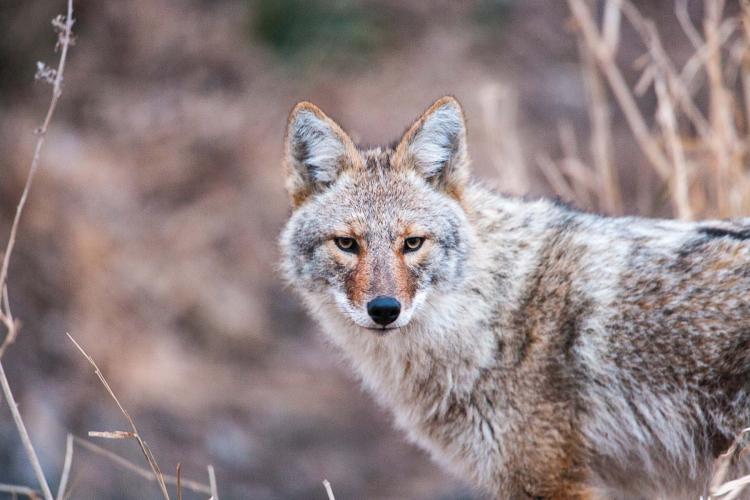Coyotes
In photography, you don’t always get the shot you planned, but if you keep your eyes open to other possibilities, you just might get a photo you didn’t expect.
It was a few days into December at Squaw Creek National Wildlife Refuge near Mound City. Bitter winds and gray skies kept most of the wildlife hunkered down. The snow geese hadn’t started their migration, and the mallards, gadwalls, and green-winged teal were too far into the wetland to photograph. A few bald eagles were present, but the weather wasn’t miserable enough yet to force a big group of them down from the north.
The large herd of white-tailed deer I was in search of was not in the usual feeding spots, so I spent a couple of hours cruising, looking for something interesting. I was about to call the morning a bust and get some hot coffee when a beautiful coyote stepped out from behind a tussock of grass at the edge of a picked cornfield. I was so focused on spotting antlers in the distant woods across the field that I nearly overlooked this amazingly fine creature less than 50 yards from my pickup. He seemed utterly unconcerned about my presence and stood still, taking stock of the situation.
I shut off the engine to kill the vibrations and slowly pulled a 500mm f/4 lens from the passenger seat, resting it on the window of the truck for stability, and snapped a few photos. As the seconds ticked by, the coyote began to shift its weight from left to right, then slowly turned and trotted away. He stopped several times to glance back at me, almost posing, as I continued to photograph him. After he faded into the grass, I continued driving a few 100 yards down the road, content with what I had captured in the camera, when I encountered the coyote again, this time even closer. I fired off a few more frames as he slinked away into the cover of the wetland.
Because coyotes are nocturnal, I normally hear them yipping and howling at night. But I have seen them during the day, darting across the brushy-crop fields they frequent. It is rare that I have the chance to see them up close. This fellow was very healthy, with a luxurious winter coat. His vigor and unthreatened demeanor hinted that he ate well and didn’t feel a lot of human pressure at the wildlife refuge.
I’ve learned over the years that most animals don’t perceive vehicles as a serious threat, so enclosed cars and trucks work well as wildlife viewing blinds if the animal is within viewing distance from the road. The instant a car door is opened and you take a step out, however, chances are the animal will get spooked and disappear quickly. Sometimes keeping the door closed means awkwardly contorting your body to frame the photo or just missing the photo altogether and enjoying the moment.
—Story and photograph by David Stonner
We help people discover nature through our online field guide. Visit on.mo.gov/1M3cWgI to learn more about Missouri’s plants and animals.


And More...
This Issue's Staff
Art Director - Cliff White
Associate Editor - Bonnie Chasteen
Staff Writer - Heather Feeler
Staff Writer - Kristie Hilgedick
Photographer - Noppadol Paothong
Photographer - David Stonner
Designer - Stephanie Thurber
Circulation - Laura Scheuler






















